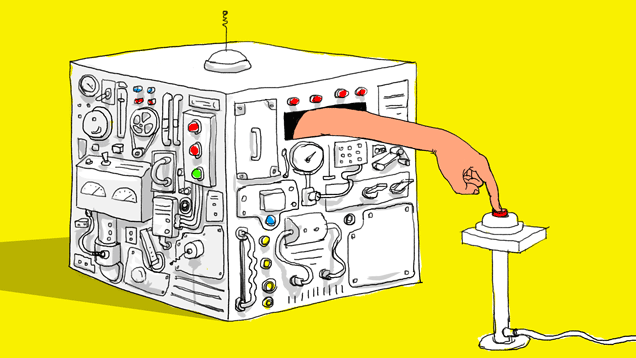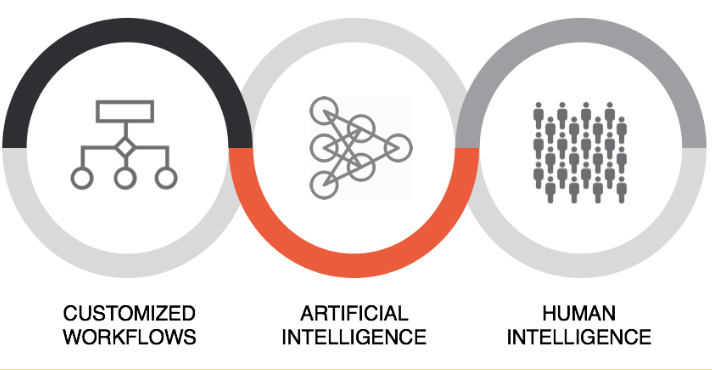
Iron-man’s a great example of how Humans + AI work well together
Here are some examples of things you need to scale and the operations that go with it:
Each of the aforementioned operations requires some form of a data workflow. Whether simple or complex, usually these workflows involve some form of converting unstructured data into structured data so that it is stored in a more usable format. Arguably most large businesses nowadays are sitting on massive amounts of unstructured data.
Example 1 — Banking: Whenever we open a bank account, we fill out a form, submit a set of identification documents, our photograph, and signatures. This is essentially unstructured data. To make it structured, a team processes these forms. This includes digitizing information, anonymizing it for safety, cross checking for data consistency, and verifying ID information from government records.
Example 2 — E-commerce: Large e-commerce marketplaces like Alibaba or Amazon curate millions of products every day. The curation or quality control process includes content moderation, classification, and tagging of the products correctly to ensure they meet Acceptable Use Policies (AUPs), that products are tagged for discoverability through filters and search, product upsells are relevant, etc. Each of these processes drives better user experience, better conversions, and ultimately more revenue.
No matter your industry, no matter your specific process, you have a f*@% ton of work to do!
- Why is this problem important? Over 80% of data is unstructured and this is expected to grow by 5x over the next 5 years.
- Why should you care? Every successful company (especially in technology) is constantly working on process improvements. You either get better or you get disrupted. The biggest example of this is legacy businesses. The average lifespan of a company on the S&P 500 has decreased from 90 years in 1935 to just 18 years today. At the current churn rate, 75% of S&P 500 companies will be removed from the index by 2027. While operational efficiency may not be the ultimate product, operations continue to be a significant driver of scale along with margins and customer experience.
FINDING THE RIGHT SOLUTION
Ok so we’ve now rubbed it in that you have a lot of work. Now what? The solution for choosing the best way to get your work done depends on a wide array of factors, however, we’ve chosen to highlight just 4 areas we think will help shape your decision.
- What is the nature of the work? Is it highly subjective or objective? Does it require deep context? How much control does it require?
- What are your resources? Money, People, Technology, Infrastructure, etc.
- How much work do you have? Do you have high volumes of repeatable work? Is it a one-time project?
- What are your requirements? Quality, Turnaround Time, Cost, Language capabilities, Volume fluctuations, etc.
Based on the above questions you’ve probably chosen to deploy one of the following methods to get this work done.
So you have this mountain of back-office work. You decide hell no I’m not doing this myself, so you hire up a bunch of junior employees to deliver the work and give them some guidelines and a Google sheet tracker. At some point soon after you realize your process is duct taped together and needs an overhaul, so you beg the engineering team to build out an admin panel to try to bring the process into the 21st century. They reluctantly build your admin panel and start to hate you for stealing their precious dev time and breaking their “flow”.
The good news is…since you have these employees in house, you can look over their shoulder, correct any stupid mistakes, and over time you can get a more solid output quality. At some point, you realize you have 35 people doing grunt work and you are paying them a high salary. Your CFO yells at you and says this is unsustainable. You secretively start looking into outsourcing as an option, keeping it hush to not piss off your employees.
But you tried outsourcing at your last company. You know the cost savings are juicy (last time you paid like $8/hr in the Philippines instead of $18/hr in Texas). You spent late nights straddling timezones and remember awkward conversations where only 70% of what is said is understood, but you were convinced it was worth it because of the cost savings, even though the quality was probably slightly less than what you got in-house.
At the end of the day, outsourcing is a thing that works for many companies. There are hundreds of BPO’s (business process outsourcing companies) out there that are doing a bang up job and plenty more that are not. It’s no wonder it’s a $180 billion a year industry today. However, outsourcing is still capex heavy (albeit slightly less than in-house), and top tier outsourcing companies are largely focused on Fortune 1,000 companies needing hundreds of agents, while mid-market businesses are forced to build moderately sized teams in-house or use lower tier BPOs with fewer seat requirements.
After outsourcing, the next evolution in ‘how work gets done’ came in 2005 when Amazon’s Mechanical Turk brought the term ‘Crowdsourcing’ into existence. Suddenly you could send your work to droves of anonymous people around the planet who would do simple tasks (Human Intelligence Tasks aka HITs) for only pennies per judgment. This was a major breakthrough for certain types of simple repeatable work, letting companies turn the faucet of human labor on or off, completely on-demand. Basically a liquid workforce.
The good news for crowdsourcing is that it is extremely cheap and incomparably flexible since you pay per task instead of per hour. No more paying for someone’s coffee breaks and downtime. However crowdsourcing’s grand challenge is that the workers are usually unknown and hard to train, and quality tends to suffer unless managed properly (because who are these people and why should they care if you’re paying them half a cent). And you half suspect people are just pushing buttons. Not to mention the platforms are really hard to use. It’s hard to effectively crowdsource unless you know what you’re doing, know how to dumb down tasks to bite sized pieces, and know a thing or two about people training and skill mapping. To address this need, a few players have emerged that have built crowdsourcing platforms specifically for enterprises, handholding them through the entire process, creating better training guidelines for the crowd, and managing their quality to get better results.
Flash forward a decade or so and here’s how work is getting done:
- In-house teams are still a thing and will continue to be a thing forever probably until we upload ourselves into the matrix.
- Outsourcing is bigger than ever and represents a huge chunk of GDP for dozens of developing nations, and is the backbone for thousands of companies.
- Crowdsourcing is still around and growing, and great for certain types of operations if you deploy it properly.
- And….there’s a new flashy bad boy in town and its name is AI.
AI today. The promise of Artificial Intelligence (AI) through machine learning (deep learning in particular as a subset) has everyone hooked. Many have committed significant resources to train algorithms on large datasets, trying to push boundaries on what’s achievable. “We’re automating x for y” is a pitch we’re starting to hear every day just about. However, one of the biggest misconceptions about artificial intelligence is the belief that AI (in
However, one of the biggest misconceptions about artificial intelligence is the belief that AI (in its current incarnation) is capable of solving end-to-end operations problems by itself without human intervention. Basically, the hype would have us think that Artificial General Intelligence is alive and ready to solve all our problems and let us retire with our universal basic income and start making shitty paintings and poetry.
In reality, what we are really good at right now is leveraging large data sets to accomplish specific tasks (Artificial Narrow Intelligence) that are plain, bounded, repetitive, and systematic in nature. We currently fall flat at replicating the breadth of human intelligence. To be clear (and to not upset our future robot overlords), AI is f*cking amazing and will help us solve countless problems better than humans. In the inverse, if you rely solely on AI, you might just get insane results. Exhibit A, B, and C.
So here’s a quick handy guide.
Artificial Intelligence
- Great at: following instructions, repeatable tasks, working lightning fast, not taking coffee breaks, not wanting a raise.
- Sucks at: subjectivity, exceptions, and anything it hasn’t been trained on yet.
Human Intelligence
- Great at: subjectivity, thinking strategically (sometimes), understanding context.
- Sucks at: working long hours, being perfectly consistent, not complaining.
Case in point. Let’s play a game. Tell an AI and a human to describe this picture.
THE CASE FOR HUMANS & AI TOGETHER
As evidenced by the above exercise, both AI & Human Intelligence (HI) have their strengths and weaknesses. However, as talk of AI (hype or otherwise) has become increasingly mainstream (proclamations of Moore’s Law as our savior — with cheaper processing costs, robotics, and artificial intelligence developing at a rapid rate), HI has taken a bit of a backseat.
Until such a time that we’ve reached general intelligence, AI and HI are simply, stronger together, and make up for each other’s shortcomings.
With AI & HI together:
- AI does the heavy lifting that only machines can do — processing millions of units in a short amount of time, and answering questions to the best of its current ability.
- HI is there to handle all the exceptions, make subjective decisions, and basically does whatever machines cannot (yet), all the while training the AI to get better and better. Not to mention HI designs, codes, and optimizes the workflow, binge watches Westworld, and shows up to do it again tomorrow, except on the weekend.
It’s the Future of Work…
Through the combination of HI and AI, we are at the brink of intelligence enhancement, which could be the most consequential technological development of our time, and in history. With Neuralink, Elon Musk is going to turn us all into Cyborgs soon anyway.
Now that we’ve made you believe that we’re probably all doomed in the long run and Skynet could be a real thing, let’s come back to solving our existential business problems.
Let’s look at companies that have disrupted operations at scale. Google and Facebook are great (albeit cliche) examples. They’re arguably sitting on the highest amount of unstructured data in the world (*wink* NSA), and have successfully created great frameworks that are worth mentioning.
- Google had to scale ads moderation — they have the highest number of ads in the world passing through their systems. Ads are third party content and so quality control and relevance are critical for Google’s ad business, which is still the highest revenue driver for the company. Getting it right is critical.
- Facebook had to scale content moderation — Facebook (and Whatsapp and Instagram) probably sits on the highest amount of unstructured, user generated content. For any social network to function well, you need great content moderation, content enrichment for ads targeting, several algorithms deciding which post to show to you vs your friends, etc.
This process, over the years, has evolved just like we talked about earlier. It went from deploying armies of people to do all the grunt work while those ridiculously expensive Stanford grads were figuring out better rule engines.
Then it moved to deploying armies of cheaper labor in developing nations by opening up an office with free lunches and eventually deploying outsourcing. With time, automation algorithms stole some of the lunch from these offshore workers (no pun intended).
This rules based system continuously evolved, identifying patterns and trends to do a chunk of the work, and finally, these companies deployed a smaller team of people (regular users) to handle exceptions.
A lot of growing companies are working on applying a similar framework to scale operations:
- Rules = Workflows
- Efficient Pattern Identification = Artificial Intelligence
- Regular Users = Human Intelligence
Now that we have shared the case for combining Artificial Intelligence and Human Intelligence at a high level, to learn how to practically apply this to your business workflows please continue reading here:
Part Two — 9 (not so easy) Steps to Scale your Business Ops using Humans and AI.
At Squad, we believe that HI and AI are stronger together. So, we developed a smart workflow builder that gives enterprises access to high-quality automation and a highly curated and quality distributed workforce on a single platform. This helps scale business processes with unprecedented SLAs of speed, accuracy, flexibility, and cost. Our customers today include Uber, Sephora, Teespring, the Flipkart Group, Snapdeal, the Tata Group, etc.
Learn more at www.SquadPlatform.com













